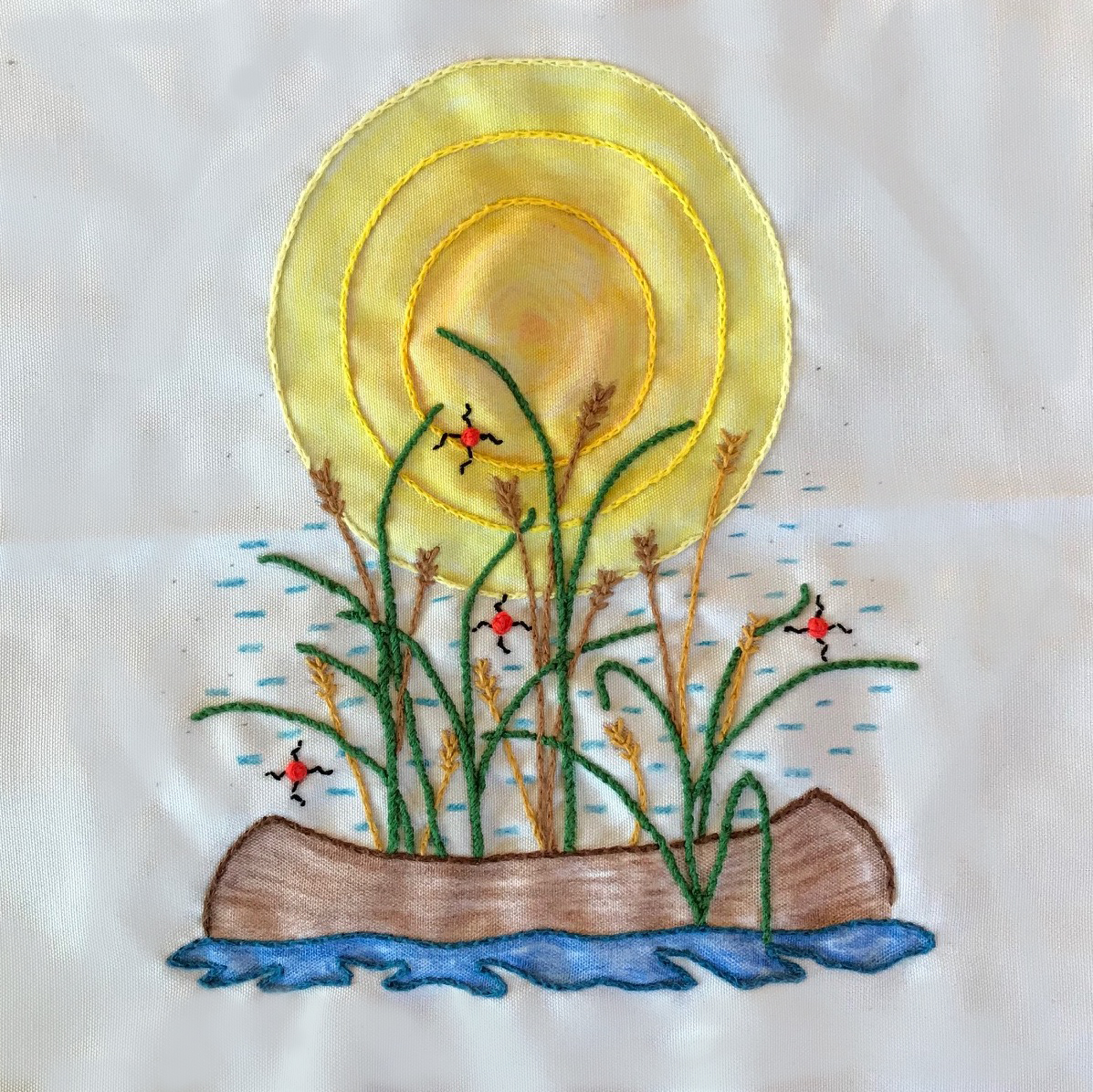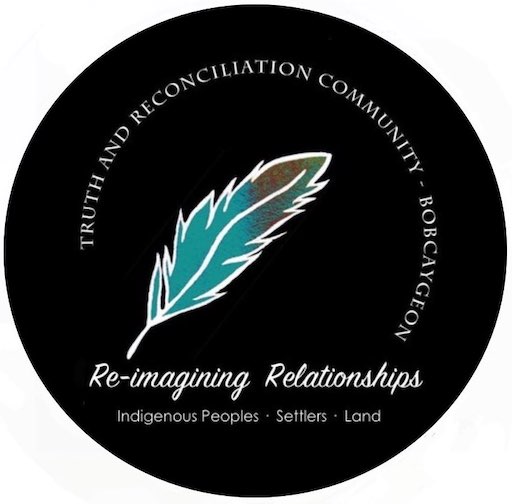Our Relationship with Manoomin
Sherry Hillman

My block is about our relationship with Manoomin, as depicted so beautifully by Georgie Horton-Baptiste for a poster she designed for Community Voices for Manoomin (CVFM) – a group which I & other TRC-Bobcaygeon members participate in, which is dedicated to protecting Manoomin and deepening our relationship with it and defending Indigenous rights to tend and harvest it. I chose “our relationship with manoomin” as the theme of my block because Manoomin is central to TRC-Bobcaygeon’s history, especially its “creation story” and my own motivation in helping found the group.
In 2015 a conflict erupted on Pigeon Lake when lakeshore property owners were discovered ripping the Manoomin out of the lake with the permission of the Trent Severn Waterway / Parks Canada without consultation and in violation of Williams Lake Treaty First Nations’ rights.
Much of the cottagers / settlers’ anger was directed against Indigenous harvesters from Curve Lake First Nation (CLFN). With racist overtones the conflict was fanned by a Lakeshore Property owners group Save Pigeon Lake (SPL) who did not appreciate the aesthetics of wild rice and claimed (falsely) that it reduced their property values and impeded their ability to enjoy the lake with their speed boats & jet skis. This conflict brought back frightening memories of racist mobilizing by the Federation of Hunters and Anglers against indigenous hunters / harvesters from CLFN. (which was eventually resolved with the Williams Taylor SCC decision), especially when a prominent member of North Pigeon Lake Assn (NPLA) proposed that the cottage association support and fund a legal challenge against the CLFN harvesters.
My husband was on the NPLA Board and convinced them not to support that proposal, but we realized we had to do something proactive to defuse the conflict and defend Indigenous harvesting rights. So we reached out and invited a number of progressive activists in the town – many who had worked together in mobilizing against a Mega Quarry, some doing advocacy work around First Nations, some working with CLFN to protect the environment from encroaching development – to an initial meeting at the United Church. And fortunately the political moment seemed promising for such an initiative, as it coincided with the release of the Truth & Reconciliation Commission’s final report and Calls to Action. So that was how TRC-Bobcaygeon was created.
Although our work has touched on many issues since that founding meeting – residential schools, MMIWG, treaties, Water Walks, etc – Manoomin has remained central to our work as the issue has continued to fester promoted by the SPL group. Some of the work we have done on Manoomin over the last few years includes: participating in the harvest with Black Duck Wild Rice harvesters James and Daemen Whetung, presenting the play “Cottagers and Indians” written by CLFN member and acclaimed playwright Drew Hayden Taylor about this issue, participating in the Parks Canada Workshop on Manoomin, participating in CVFM and the 4 Ceremonial Paddles in 2019 corresponding with the stages of manoomin’s lifecycle.
These ceremonial paddles had a profound effect on me – deepening my relationship to Manoomin – especially with elders and knowledge keepers Dorothy Taylor and Shirley Williams sharing their stories and songs about the importance of Manoomin to the Michi Saagiig Nishnaabeg – not only as a sustaining and nutritious food source but even more importantly culturally and spiritually as central to their migration story, connecting them to their land. I have been personally involved in all aspects of TRC-Bobcaygeon’s work around Manoomin, so this block symbolizes my work in the group and all the wonderful relationships created doing this work.
